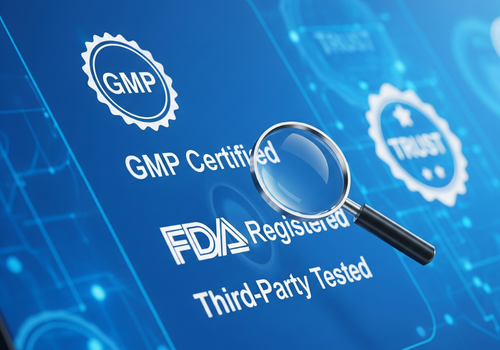How to Tell If a Product on Amazon Is Actually Safe, Certified, and Worth Your Money in 2025 — Get to Know
Why Product Safety on Amazon Is Harder to Trust Now Than Ever Before
Amazon’s open marketplace structure allows third-party sellers from around the globe to list products quickly, often without rigorous vetting. While this model boosts selection, it also increases the chances of counterfeit, mislabeled, or unsafe items being sold — especially in high-risk categories like supplements, electronics, baby products, and health tools. Many of these products may bypass regulatory requirements, offer misleading labels, or copy legitimate products to deceive shoppers. With an increase in overseas vendors and lenient listing policies, buyers must take safety verification into their own hands more than ever before.
How to Check If a Product Is Certified or Approved Before Buying
Certification is one of the strongest indicators of product safety. In the case of electronics, look for CE (Conformité Européenne), FCC, or UL certification logos in the product description or packaging. For supplements, make sure the product follows GMP (Good Manufacturing Practices) and is lab-tested by independent bodies — often confirmed with NSF, USP, or Informed-Sport certifications. Genuine brands highlight these clearly, usually within the listing images or bullet points. If you don’t see any such certifications, that’s a major red flag. You can also check if the brand is registered with Amazon Brand Registry — a sign of legitimacy.
Evaluate the Seller’s Credibility and History Carefully
Click on the seller’s name on the product page to review their storefront. Check their ratings, how long they’ve been selling on Amazon, and read feedback from other customers. Trusted sellers usually have consistent 4-star+ ratings over thousands of orders and a long-standing history. Be cautious of sellers with limited reviews, sudden listing spikes, or multiple brands under one account. If the product is fulfilled by Amazon (FBA), that adds a layer of protection — but not a guarantee. Always pair seller research with product analysis before placing your order.
Understand the Role of Third-Party Sellers and Amazon Fulfillment
A product can either be sold and fulfilled by Amazon, or by a third-party seller who manages inventory independently. Fulfilled-by-Amazon (FBA) products are stored in Amazon warehouses and shipped directly by Amazon. While this offers buyer protections, it doesn’t guarantee safety — unsafe or counterfeit products can still be fulfilled by Amazon if proper checks weren’t done at intake. Items “Sold by Amazon” are generally safer, since Amazon sources and manages these directly. You can see this info under the “Buy Box” or price section. Avoid “just launched” sellers unless they offer strong brand proof or certification.
Review Product Images and Descriptions for Misleading Claims
A high-quality product listing should feature clear, original images of the actual product, certifications, and packaging. Generic or photoshopped images — especially with spelling errors or fake seals — are a red flag. The description should include ingredients (if applicable), country of origin, usage instructions, and warnings. Watch out for overly aggressive claims like “100% safe,” “instant results,” or “FDA approved” (FDA does not approve most consumer products; they regulate them). False advertising is rampant in 2025, and professional-looking listings can still be hiding unsafe or untested products.
Use External Review Sites and Databases for Cross-Verification
Don’t rely only on Amazon reviews. Fake reviews are still a huge problem. Use tools like Fakespot or ReviewMeta to analyze the authenticity of the reviews on the listing. For supplements and personal care, search the product or brand on Labdoor, ConsumerLab, or similar independent testing sites. For electronics, try Reddit tech forums or professional review platforms that compare safety certifications and build quality. The extra step could protect your money — and your health.
Be Cautious of Extremely Low Prices or “Too Good to Be True” Offers
In 2025, price manipulation is more common than ever. If a product is significantly cheaper than competitors and offers wild claims, it’s likely unsafe or counterfeit. Sellers often lower prices to trick Amazon’s algorithm into showing their listings higher in search results. This tactic misleads consumers into thinking they’re scoring a deal — when in fact, they’re buying low-quality or even harmful goods. Always compare prices with other trusted brands and sellers before jumping on an unbelievable deal.
Check Product Q&A and Verified Purchase Reviews for Safety Clues
Read the product’s Q&A section and prioritize “Verified Purchase” reviews. These often highlight real issues related to safety, fake certification, allergic reactions, or build defects. Watch for repeat complaints like “no seal,” “tampered bottle,” or “it shocked me.” Verified reviews are more trustworthy than non-verified or influencer-style reviews. If dozens of buyers report a safety issue, take it seriously — even if the product still has a 4-star average.
Conclusion: Your Safety Starts with Smarter Shopping in 2025
With Amazon’s convenience comes a responsibility to be more cautious. As a consumer in 2025, knowing how to evaluate whether a product is safe, certified, and truly worth your money is essential to avoid scams and protect your well-being. Learn to spot certifications, vet sellers, inspect product details, and cross-check reviews using external tools. Don’t assume that everything sold on Amazon has been properly vetted — it hasn’t. Take your time before you buy, and you’ll protect your money, your trust, and most importantly, your safety. In a marketplace this vast, knowledge is your best defense.

